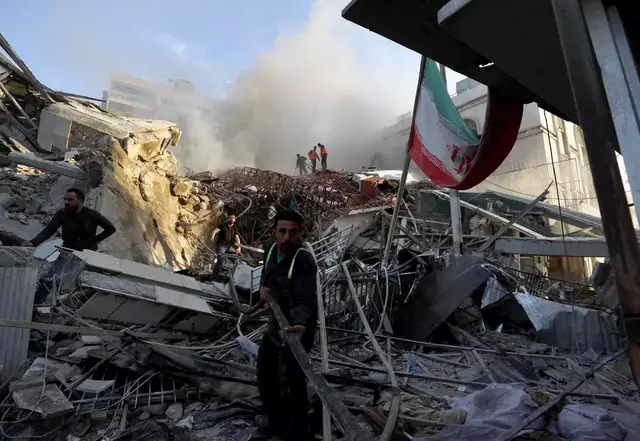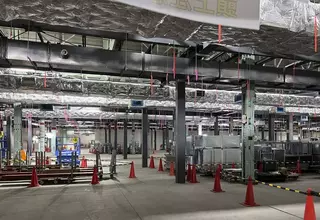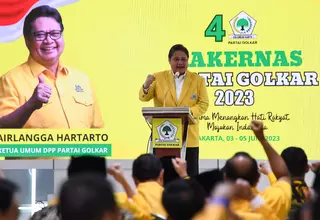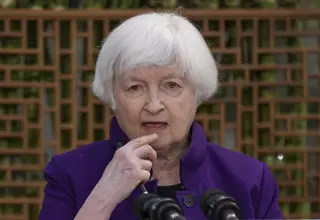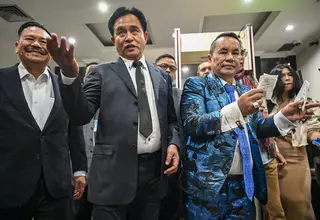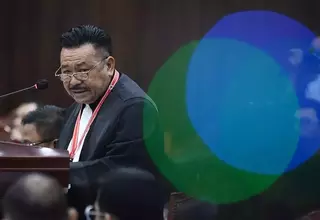UN Disaster Forum to Push for Risk Cutting Plans, Finance

Tepic, Mexico. Hard on the heels of a drought-linked hunger crisis in Somalia, floods in Peru and Colombia, and Cyclone Debbie in Australia, governments will be tasked with formalizing efforts to protect citizens from disasters, and working out how to cover the cost at a major UN conference in Cancun, Mexico, this month.
With natural disasters expected to increase as the planet warms, the gathering of more than 5,000 experts will provide a crucial check-up on how government strategies to reduce risk are shaping up ahead of a 2020 deadline to substantially increase the number of countries that have them in place.
"It is not about score-keeping, it’s not about naming and shaming," said Jo Scheuer, director for climate change and disaster risk reduction with the United Nations Development Programme (UNDP).
"We do not know how many countries have truly worked on their strategy for 2020 [so] being able to actually look at that and learn from that is extremely important," he said.
Running from May 24-26, the Global Platform for Disaster Risk Reduction is the first international summit since the 15-year Sendai Framework was hammered out in Japan in 2015, setting ambitious targets for governments to substantially cut deaths and economic losses from disasters by 2030.
The seven Sendai targets also include limiting damage to infrastructure and disruption to basic services such as health and education, and widening access to early warning systems and disaster-risk information.
In Cancun, the UN Office for Disaster Risk Reduction (UNISDR) will demonstrate an online monitoring tool that, from 2018, will enable countries to check their progress towards the targets, using indicators now being tested.
Meeting the Sendai goal of putting national and local disaster risk reduction (DRR) plans in place by 2020 will help reach the other targets, experts say.
"A lot of discussion will focus around how these DRR strategies can be designed in the most effective way, to make sure they are value for money, they are appropriate and target the most vulnerable," said Lucy Pearson of the Global Network of Civil Society Organizations for Disaster Reduction.
There is also a need to involve communities more in putting them together, she added.
Last year, India became one of the first countries to adopt a national disaster plan which incorporated the Sendai Framework priorities - covering disaster prevention, mitigation, response and recovery - and providing for better coordination among government agencies and departments.
While around 75 percent of countries have some form of disaster risk planning in place, governments need a single strategy to monitor progress and ensure they are on track to meet the Sendai targets, experts say.
Funding Gaps
While the Cancun conference is likely to ram home that spending on DRR is insufficient, no major pledges of fresh money are expected.
But ways of using insurance to tackle funding gaps and engaging the private sector more effectively in building resilient infrastructure are expected to be laid out.
The UNDP's Scheuer said he wanted to see a shift away from reliance on already stretched humanitarian budgets to fund disaster prevention measures, towards using development aid for risk management and resilience-building.
"Many countries have already increased the amount of money for disaster risk reduction, but I think this meeting is about prioritizing where these funds should be put," said Ciro Ugarte, director of health emergencies at the Pan American Health Organization, emphasizing the need to protect hospitals and schools.
The United Nations has called on governments to spend at least 1 percent of development aid by 2020 on disaster prevention, but overall, they spend just half that amount.
"It's already a difficult financing environment," said Ronald Jackson, executive director of the Caribbean Disaster Emergency Management Agency, citing the multiple demands of the Sendai Framework, the Paris Agreement on climate change and the new global development goals launched last year.
He urged the Cancun meeting to recognize the synergies between the three agendas.
"Cutting disaster risk will allow countries to pursue their broader prosperity targets and reduce poverty under the Sustainable Development Goals," he added.
Political Weight
Last month, Robert Glasser, head of the UNISDR, said calculating the costs of natural disasters was a valuable way for governments to recognize and limit the potential for damage, especially as extreme weather linked to climate change intensifies.
Around 11,000 people died in 2016 as a result of natural and manmade disasters, which cost $175 billion in economic losses, according to reinsurer Swiss Re.
Hurricane Matthew was the year’s deadliest natural catastrophe, claiming around 1,000 lives, primarily in Haiti.
Cancun will also host a conference on early warning from May 22-23 and dozens of parallel events, all tackling the question of how best to keep people safe from disasters.
"There's been significant progress in disaster being an important issue on the political agenda," Carlos Villacis, director of applied science at the Pacific Disaster Center, said by phone from Hawaii.
Fifteen years ago, most of the discussions were among technical experts, he noted.
"Now we have governments, presidents and ministers discussing this. That's the right audience and we would like to see how they are utilizing all this information."
Reuters
Tags: Keywords:POPULAR READS
Nissan to Make Next-Generation EV Batteries by Early 2029
Solid-state batteries are widely seen as the next step for EVs.Airlangga Set to Extend Leadership in Golkar After Election Success
Under his leadership, Golkar rose to the second position in the legislative polls and successfully made Gibran the elected vice president.Yellen Says Iran's Actions Could Cause Global 'Economic Spillovers'
Iran's missile attack on Israel early Sunday came in response to what it says was an Israeli strike on Iran's consulate in Syria.Takeaways from Prabowo's Responses to Legal Motion Contesting His Election Win
Part of the argument addresses the claim that the candidacy of Gibran Rakabuming Raka, Prabowo’s running mate, is unlawful.Prabowo Camp Cites ‘Procedural Error’ in Legal Challenge by Rival Candidates
The Constitutional Court's main task is to address alleged discrepancies in vote tallies, which neither of the plaintiffs challenged.Popular Tag
Most Popular
